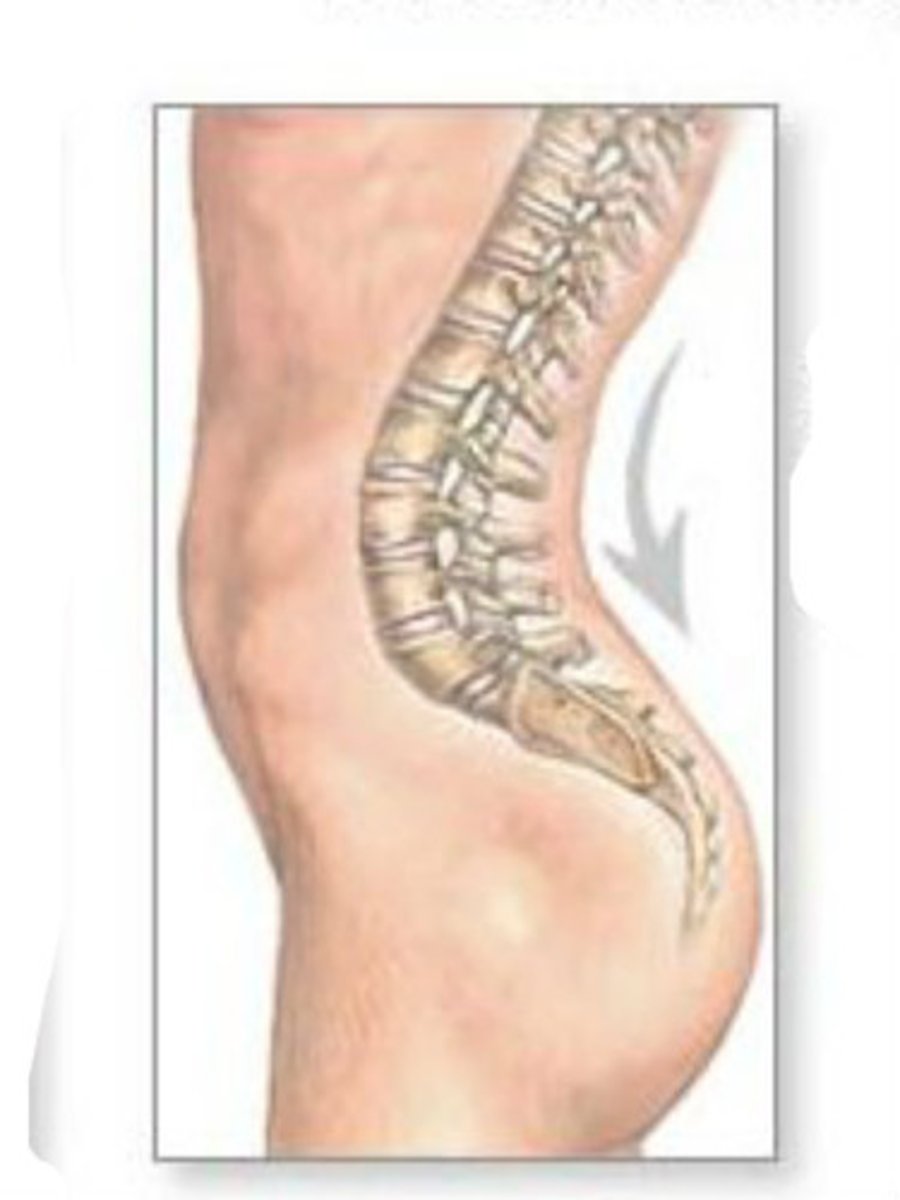FOUNDATION OF NURSING FINAL
1/125
There's no tags or description
Looks like no tags are added yet.
Name | Mastery | Learn | Test | Matching | Spaced |
|---|
No study sessions yet.
126 Terms
Lordosis
Inward curvature of the spine (pregnant women)

Peripheral Pulse Points
Brachial, Radial, Ulnar, Temporal, Ulnar, Temporal, Carotid, Apical
Pulse Grading Scale
3+ increased, full, bounding
2+ normal
1+ weak
0 absent
Peripheral Arterial Disease (PAD)
Reduced blood flow caused by ischemia
Ischemia
deficient supply of oxygenated arterial blood to a tissue caused by obstruction of a blood vessel
Risk Factors for Heart Disease
Heredity, Obesity, Hish Cholesterol, Smoking, Diet, Stress
What is the leading cause of death for men and women worldwide?
Heart Disease
Ways to prevent or treat Heart Disease
Aspirin Therapy, BP Control, Cholesterol Control, Smoking Cessation, Lifestyle Changes
Mental health Assessment
Check of emotional and cognitive functioning, ABCT
ABCT
appearance, behavior, cognition, thought process
Appearance
Body posture, body movement, dress, grooming, hygiene, pupils
Behavior
A+O, Facial Expression, Consciousness, Speech, Mood and affect
Cognition
Orientation, Attention span, recent and remote memory
4 unrelated words test
Thought Processes
Should be logical, goal-directed, coherent, and relevant
Complete Thoughts
Abnormal Bruising
TEN4
(Torso, Ears, Neck on a child under 4, abnormal, abuse?)
Subjective Data of the Neurological System
Headache, Head injury, Dizziness/vertigo, syncope, seizures, tremors, incoordination, numbness or tingling, dysphagia, difficulty speaking, weakness
Seizures
Abnormal surge of electricity in the brain
effects speech and arm movement
caused by epilepsy, tumors, or infections
what kinds of questions should be asked after a seizure
Any Aura? When did it start? How long did it last? Color Change?
Ischemic stroke
Sudden interruption of blood flow, Thrombic, Embolic
Hemorrhagic stroke
Acute rupture or bleeding
caused by tumor, cocaine, disturbed coagulation cascade, congenital malformations
FAST Assessment
Facial Drooping
Arm Weakness
Speech Difficulty
Time to call 911
Nursing Process
Assessment
Diagnosis
Planning
Implementation
Evaluation
Pruritis
Itching
Pediculus
Head Lice
Stress incontinence
inability to control urine under physical stress
Urge Incontinence
Involuntary leakage of urine
Overflow Incontinence
Small amounts leak from a full bladder
Abdominal Assessment
inspection, auscultation, percussion, palpation
Acute
A condition with rapid onset and/or a short course
Chronic
A condition that is persistent or long-lasting
Prognosis
The likely course/expected outcome of a disease or ailment
Diagnosis
Identification of a disease or condition
Etiology
The study of the cause of disease
Benign
Non-cancerous
Malignant
Cancerous and potentially life-threatening
Idiopathic
Of unknown cause
brady-
Slow
Tachy-
fast
a- or an-
Without, not
dys-
bad, difficult, painful
eu-
good, normal
cyano-
Blue
erythro-
red
leuko-
white
melano-
black
angio-
vessel
arthro
joint
Abdominal Subjective Data
Appetite, dysphagia, food intolerance, abdominal Pain, Nausea and vomiting, bowel sounds, history, medications, nutrition, PICA
SMART goal
Specific, Measurable, Attainable, Realistic, Timed
Anorexia
loss of appetite
Dysphagia
difficulty swallowing
pyrosis
heart burn
OLDCARTS
Onset
Location
Duration
Characteristics
Aggravating and Alleviating Factors
Related Symptoms
Treatment
Severity
Hematemesis
blood in vomit
Do stool color and vomit color matter?
YES, especially in PEDS
Abdominal Quadrants
RLQ- appendix
RUQ- Gallbladder
LUQ- stomach
LLQ-Sigmoid Colon
Bowel Sounds
Movement of air through small intestine, high pitched, 5-30 per minute
Borborygmas
hyperistalsis (stomach growling)
GU subjunctive Data for females
Menstrual History, ob history, menopause, pt-centered care, acute pelvic pain, urinary symptoms, vaginal discharge, past history, sexual activity, contraceptive use, STI contact
GU subjunctive data for males
Frequency, Urgency, nocturia, dysuria, hesitancy or straining, urine color, past GU history, penis-pain, scrotum - self care, behaviors, lumps, sexual activity, contraceptive use, STI contact
cardiovascular subjective data
Chest pain, dyspnea, orthopnea, cough, fatigue, cyanosis, edema, nocturia, past cardiac history/family history, pt centered care
Questions to ask with Chest Pain
w/ breathing? location? severity? Reproductive? Worse w/ breathing?
Dyspnea
feeling of difficulty breathing
Orthopnea
Feeling of difficulty breathing lying down
Cyanosis
Blue colored skin
Nocturia
Going potty at night
Ankylosis
stiff joints due to bone fusion
Quantitive
Measurable, signs -> BP, Temp, RR
Qualitative
symptoms, subjective, how someone
Scoliosis
Lateral sideways curvature of the spine
vertigo
dizziness, feeling that the room is spinning
Abdominal Contours
Flat, scaphoid, rounded, protuberant
Venous stasis
temporary cessation or slowing of the venous blood flow
Pain Assessment
OLDCARTS
Blood Pressure Factors
age, gender, race, diurnal rhythm, weight, exercise, emotions, stress
Headaches
Tension, migraine, or cluster
Can be benign but also indicative or migraines or a more serious condition
What questions should I ask about Headaches?
How long?
When did it start?
Intensity?
Are there any other symptoms?
Inspection of the skin
color: no abnomal pigmentation, general pigmentation, moles, birthmarks
Temperature: warm, equal temp bilaterally
Moisture
Texture: smooth and firm
Thickness- observe for thickened areas
Edema- fluid acumulation
mobility and turgor- skin elasticity
Vascularity and bruising
cyanosis
blue
Pallor
White/pale
Erythmea
Red
Jaundice
Yellow
Venostasis
Blood pooling in the leg
causes brown or rust colored skin
Skin Assessment
Inspection, palpation, note lesions, teach self exam
Hypothermia
<96
Hyperthermia
>100.4
Diaphoresis
excessive sweating
dehydration
dryness resulting from the removal of water
Abnormal Heart Rate
<50 or >100
Abnormal BP
>160 or <90
Abnormal Temp
<96 or >100.4
Abnormal Respirations
<12 or >25
Abnormal O2
<92
Abnormal Urine Output
<30 hourly
Findings Requiring Immediate Assistance
Abnormal Vital Signs
Urine Output
Dark amber or bloody urine
post-op nausea or vomiting
pain not controlled by meds/unusual chest pain
bleeding
weak pulses
altered level of consciousness, confusion or difficulty arousing
sudden restlessness/anxiety
Normal HR
60-100
Normal BP
120/80
Normal Resp
10-20
normal O2
95-100%
Normal Temp
97-100.4